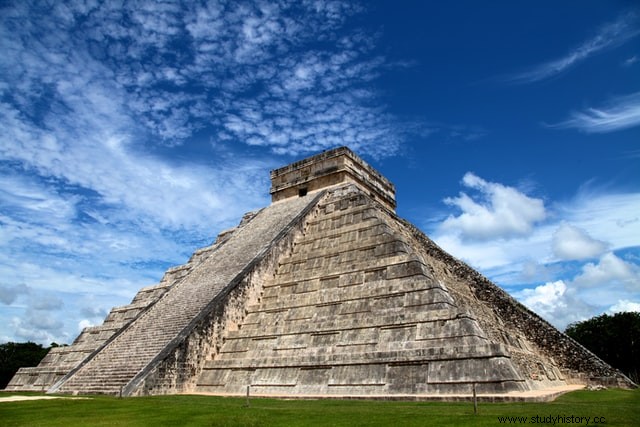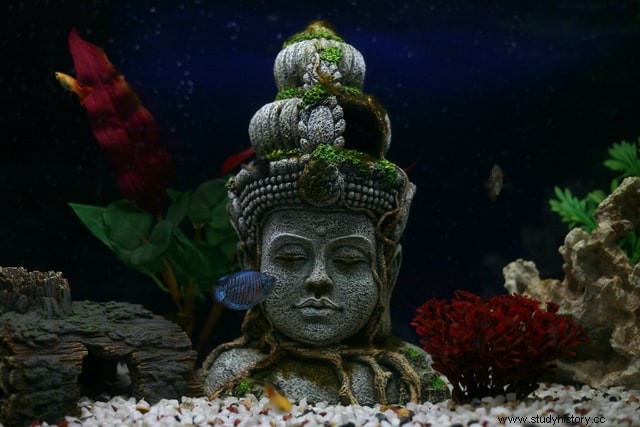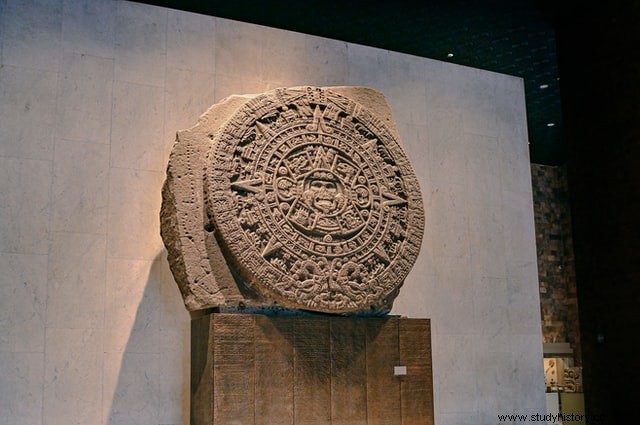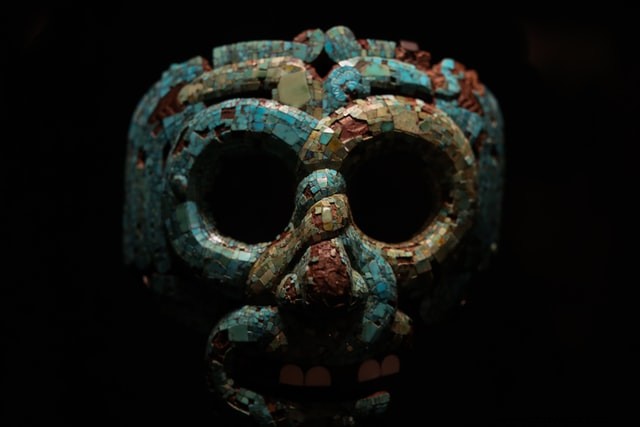2020 has been a pretty year quite frankly. Terrible, upsetting and gloomy for the most part, but it has been a silver lining for lovers of archeology, history and mythology. From finding more than 100 painted coffins with mummies in the ancient Egyptian necropolis of Saqqara to discovering the largest and oldest Mayan monument, as well as finding the ruins of the Lost Capital of the Ancient Maya Kingdom, archaeologists and theorists have definitely had a moment to rejoice seg. These discoveries have revived an already burning interest in the very mysterious but exciting Mayan civilization.
2 million square kilometers of lush greens hide centuries-old ruins full of mysteries beneath them. Countries that today form part of present-day Mexico and Central America were once a testament to one of the world's most sophisticated and mysterious ancient Mesoamerican civilizations. The Mayans have left everyone confused by their highly sophisticated writing systems, knowledge of mathematics and astronomy, and architectural features. Often a source of astonishment to modern humanity, whether because of its doomsday prediction or because of some very fancy out of the world sarcophagus design, the Mayan civilization, one of civilization's six cradles around the world, is still unfolding layer by layer.
Recent Finds

- Using LIDAR technology, The oldest and largest ceremonial structure in the Mayan world has been discovered, which has been hiding in common sight in Tabasco, Mexico near the border with Guatemala. Known as Aguada Fenix, or "Phoenix Reservoir", the monument measures almost 4,600 feet at an altitude of 30-50 feet. The only piece of the sculpture that has been uncovered so far is a two-foot-high limestone sculpture of a spear with the nickname "Choco" of the excavators. Radiocarbon dating suggests that the Maya people constructed the ritual space between 1000 and 800 BC. According to archaeologist Takeshi Inomata of the University of Arizona, "it seems that people were not forced to build this structure, but instead came together to build it together with a strong central leadership."
- Lost capital of the ancient Mayan Empire has been discovered by a team of researchers from Brown University and Brandeis University, in the backyard of a Mexican cattle. According to anthropologist Charles Golden, this place, now known as Lacanja Tzeltal, is believed to be the capital of the Sak Tz'i Empire, located in what is now the state of Chiapas in southeastern Mexico.
Beginning at the end - when and where?

The Mayan civilization, which had a geographical spread over present-day southern Mexico (Yucatan Peninsula and Chiapas), Guatemala, Belize, western Honduras and El Salvador, can be divided into three phases. In these phases the most important cities were Bonampek, Calakmul, Palenque, Tikal, Copan, Naranjo . The most successful kings were those who controlled trade routes, especially the main city Teotihuacan (modern day Mexico)
- Pre-Classical Period (2000 BC - 250 AD ) - This is the era when the Mayan civilization began. The Mayan occupation of Cuello (present-day Belize) has been carbon dated to around 2600 BC. This period saw the emergence of identifiable Mayan culture around the world. This was the time when sophisticated agricultural systems were developed with Mayans cultivating the main crops of corn, beans, squash and chili peppers, as well as trade routes were solidified. The newly discovered site Aguada Fenix belongs to this period.
- Classical period (250 - 900 AD) -This period marked the peak of large-scale construction and urbanism, the recording of monumental inscriptions and demonstrated significant intellectual and artistic development. During this phase, cities throughout the Maya region were affected by the large metropolis of Teotihuacan in the Mexico Valley. In AD 378, Teotihuacan intervened decisively in Tikal and other nearby cities, deposed its rulers and installed a new dynasty with Teotihuacan support. This intervention was led by Siyaj Kʼakʼ ("Born of Fire"), who arrived in Tikal in early 378. The king of Tikal, Chak Tok Ichʼaak I, died the same day, indicating a violent takeover. The installation of the new dynasty led to a period of political dominance when Tikal became the most powerful city in the central lowlands. During the 9th century AD. The central Maya region suffered a major political collapse, marked by the abandonment of cities, the end of dynasties and a shift in northern activity. There are several theories that speculate on the causes of this collapse - foreign invasion, exhaustion of agricultural systems leading to environmental degradation, the fall of Teotihuacan in the 600s and demographic decline leading to the collapse of the dynasty.
- Postclassical period (900-1500 AD) - After the big cities in the classical period were abandoned; the population was particularly concentrated near permanent water sources. Chichen Itza and Puuc's neighbors drastically declined in the 11th century, representing the last episode of collapse in the classical period. I 12 th C, Mayapan emerged as an important city, which was later abandoned in 1448 due to political, social and environmental turbulence.
- Period 1500 and onwards witness a Spanish takeover of this ancient civilization and this conquest removed most of the defining features of the Mayan civilization. Most people were eliminated and all assets including 10,000 Mayan books were burned. However, many cities remained sheltered from Spanish influence for a long time. The ancient city of Tulum on the Caribbean coast, surrounded by impregnable walls, managed to remain protected for 70 years. The last independent Mayan kingdom - the island town of Tayasal existed until 1697 when empire subject to Spanish conquest in March 1697, led by the then governor of the Yucatan, Martin de Ursua.
- Today, about. 5 million descendants of the Maya still live in southern Mexico, Guatemala, Belize and northern Honduras. Many people continue to hold on to their traditions, such as speaking their mother tongue (over 70 Mayan languages known), wearing traditional clothing, and practicing indigenous forms of religion. The most famous "Maya" today is probably Quiché-born Rigoberta Menchú, winner of the Nobel Peace Prize in 1992. She is a well-known activist for indigenous peoples' rights.
Myths, Mythologies and Facts

With a civilization as advanced as the Maya, at a time when the world was barely entering the wild stage of civilization, wild speculation is only natural and essential. Anthropologists, archaeologists, scientists and theorists have gone to great lengths to provide various theories related to the Maya. Whether they are just wrong ideas or have any merit is left to the reader's wise judgment.
- The foremost theory applies to King Pakal the Great. He was a jaw-dropper of the Mayan city-state of Palenque during the 7th century. In the Mayan tradition, the king is considered both the political supremo and a semi-divine figure. As for Pakal, the mysteriously carved lid of his sarcophagus has been the subject of pseudo-archaeological speculation, with some experts on extraterrestrial domains such as Eric Von Daniken comparing him to an ancient astronaut. The picture above of Pakal's sarcophagus in contrast to an astronaut sitting in a space capsule shows a remarkable resemblance in a sitting position, and the intricate equipment arouses some suspicion, I will admit.
- The second applies to the Mayan calendar and doomsday predictions. The Maya are honoring the establishment of a complex interlocking calendar system that dates events in the form of time that has passed since a zero point in the past (4000 BC), known as the long count to count down 5125 years as a major cycle. This calendar is divided into 13 units of 400 years each called Baktuns and at the end of each Baktun the Mayans hold elaborate celebrations. But strangely enough, they did not celebrate the 10 th Baktun. And soon enough, the great disappearance happened. So considering that they are the best timers of all time, and they could not possibly calculate the date incorrectly, the question arises whether they deliberately planned the disappearance on the 10th th Baktun? Many people thought that they went back to where they came from, that is, outer space.
- According to David Wilcook, author of "The Synchronicity Key", the Mayans were archaeoastronomists. The seven most important pyramids in the main square form the same geometric pattern as the 7 stars that make up the Pleiades constellation. There are theories that the Pleiades were probably their place of origin and therefore the attempt to align the pyramids with them. Stargazing was definitely a favorite among the Mayans.
- The solar pyramid in the ancient city of Teotihuacan, built 2000 years ago, seems supernatural due to its age, size and complexity, leaving room for suspicion of possession of such advanced technology that was unthinkable in pre-Aztec Mexico. / li>
Achievements
- The Mayans had their own writing system. Also known as Mayan glyphs , this language was an intricate and complex set of logograms supplemented by a set of syllable characters. Dates are prominent on the large stone monuments constructed by them called Stelae, which recorded births, genealogy, titles, alliances and achievements of dynasties and contained elaborate carvings.
- Obsessive astronomers, they saw gods in the sky. They kept accurate tables predicting eclipses, solstices, and other celestial events. The main reason for such a detailed observation was the belief that the sun, moon and planets were gods moving back and forth between the sky, the underworld (Xibalba) and the earth. These heavenly events were marked by ceremonies at temples. Mayans were among the first to record history in books. And they were prolific writers:although many of them are now lost, historians believe the Mayans may have written as many as 10,000 XNUMX books. Mayans used hieroglyphs, similar to the Egyptians, to write. It was one of the most complex systems on earth.
- The Mayan civilization was very skilled at creating art, architectural wonders and complex mathematical and astronomical systems that were far ahead of time. The most prominent achievements of the Mayans are the construction of pyramids, the Mayan calendar, the Mayan writing, stone sculptures, wood carvings, murals on the walls of buildings, calculations of the length of the tropical solar year and the Mayan numerical system.
- They had a very sophisticated network of city-states, well-organized transport systems, very advanced agricultural systems and well-developed aqueduct systems to provide spring water to all the inhabitants.
Architectural Wonders

- Kukulkan Temple, Chichen ITZA (9-12 th C) - Like a temple to the Mayan snake god Kukulkan, it was almost completely hidden in the forest, covered with vegetation when it was first photographed in 1880. It is a pyramid-like structure with a square terrace and stairs with 91 steps on each side. Together they make up 365 steps, the total number of days in a year. Intended or random? You decide !! During the autumn and spring equinoxes, you can see a snake-like shadow crawling on the pyramid's balustrade. It moves upwards in March and downwards in September, and this illusion lasts for almost 3 hours. This phenomenon attracts thousands of tourists. However, it is closed for climbing.
- The Balancanche Caves (Cave of the Holy Jaguar Throne) Jaguars are symbolic of Mayan leaders, not the cats you have to imagine! It was first discovered in 1905. In 1954, local tourist guide Jose Humberto Gomez stumbled upon a secret wall, and as he pursued, he discovered formats of stalactites and stalagmites of Maya's Tree of Life.
- Cenote IK kil - There is a sinkhole located in the state of Yucatan in Mexico. The Mayans used it as a place for rituals. As of today, tourists like this place to swim with many waterfalls.
- Nohoch Mul Pyramids - It is a 137 foot high pyramid with 130 steps to provide a remarkable view of the Yucatan and Coba, including two lagoons:Macanxoc Lagoon in the east and Coba Lagoon in the west.
- Tulum Old Town - It is the only Mayan city on the coast of the Caribbean Sea. It was originally called Zama - City of dawn. The three most popular structures here are:El Castillo, the fresco temple and the descending temple of God. As mentioned earlier, the Spanish invasion survived for 70 years. It is a treat for both Mayan history lovers as well as nature lovers. A large number of sinkholes, such as Maya Blue, Naharon, Temple of Doom, Grand Cenote etc are located here.
- Pyramid of Magician, Uxmal - It is the tallest and most recognizable structure, also known as the Dwarf Pyramid / Casa el Adivino. According to legends, a magician named Itzamna created it alone in just one night. Tourists who visit it can see a sound and light show in both English and Spanish every night.
- Temple of the Inscriptions, Palenque - It was built as a tomb for King Pakal, ruler of Palenque in 7 th C. In 1949, one of the chambers revealed a secret passage to his tomb filled with ancient treasures and artifacts. In his sarcophagus is a Jade Death mask with eyes cut out of obsidian, mother of pearl and shells. The images on his sarcophagus illustrate a central Mayan belief that the universe consists of three levels - the earth, the underworld and the sky. After leaving this world, Pakal emerges from the underworld and is reborn into eternal life in heaven. Tourists are not allowed to enter the tomb, but can find an exact replica of the Jaded Death Mask at the National Museum of Anthropology, Mexico.
- Maya by Vaxchilan - Near Palenque, was one of the most powerful cities. It is known for well-preserved stone ornaments over the doorways of the main structures known as rafters. These contain hieroglyphic texts, which provide insight into the city's history.
- Bonampak Murals - The highlight of this city is the murals in the temple. They depict Mayan rulers, dancing people, musicians, battles and sacrificial rituals. According to Prof. Mary Miller, who specializes in Mayan art, no artifact gives a better glimpse of Mayan times than these.
- Temple of Great Jaguar, Tikal - Located in the heart of a world heritage site, and it is surpassed by the characteristic ridge that is unique to the Mayan culture. In 1962, archaeologists discovered the tomb of the king who built it. The body was covered with Jade ornaments and a 4 kg Jade necklace. On December 21, 2012 (the much hyped doomsday), which marked the end of the Mayan calendar, modern Mayans held a fire ceremony in front of the temple, which saw the participation of over 3,000 people.
Documents and languages
- “Popol Voh” , The Mayan sacred book describing the creation of mankind, is the only one that has survived. Although the original text has been lost, in 1700 Father Franciso Ximenez translated a surviving copy. This text also contains the story of Xbalanque and Hunahpu, the hero twins who fought against the god of the underworld.
- Around 2.3 million people still speak a language called K'iche ', which is the most widely spoken of nearly 30 Mayan languages spoken in Guatemala, Mexico, Belize and Honduras. All of these languages are descended from Proto-Maya, which was supposedly spoken more than 5,000 years ago.
- The ancient Mayan religion is very complex, with over 150 gods, each clearly defined by its characteristics and purpose. Five of these gods were worshiped very often according to ancient texts, and are thus considered the most important. The current religion is a mixture of ancient Mayan ideas, animism and Catholicism.
